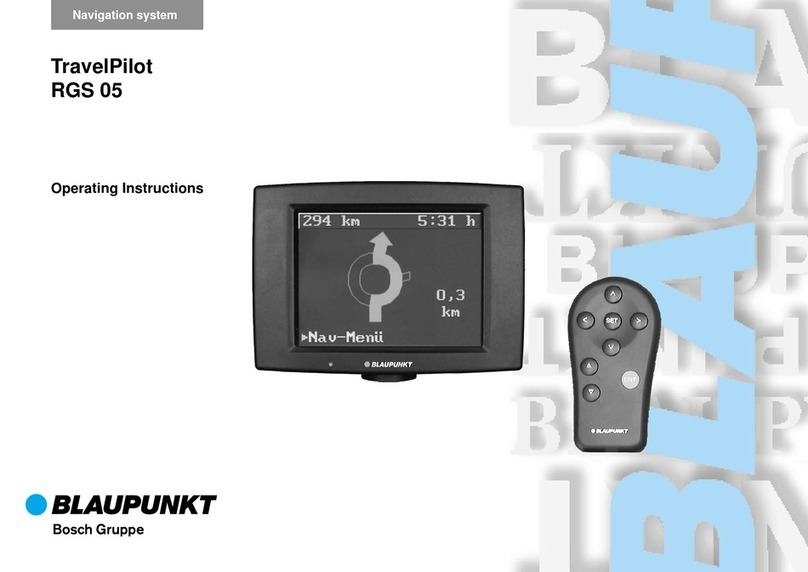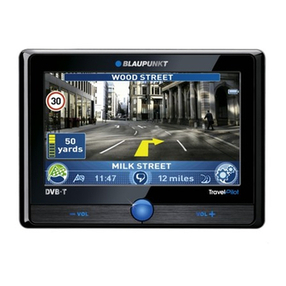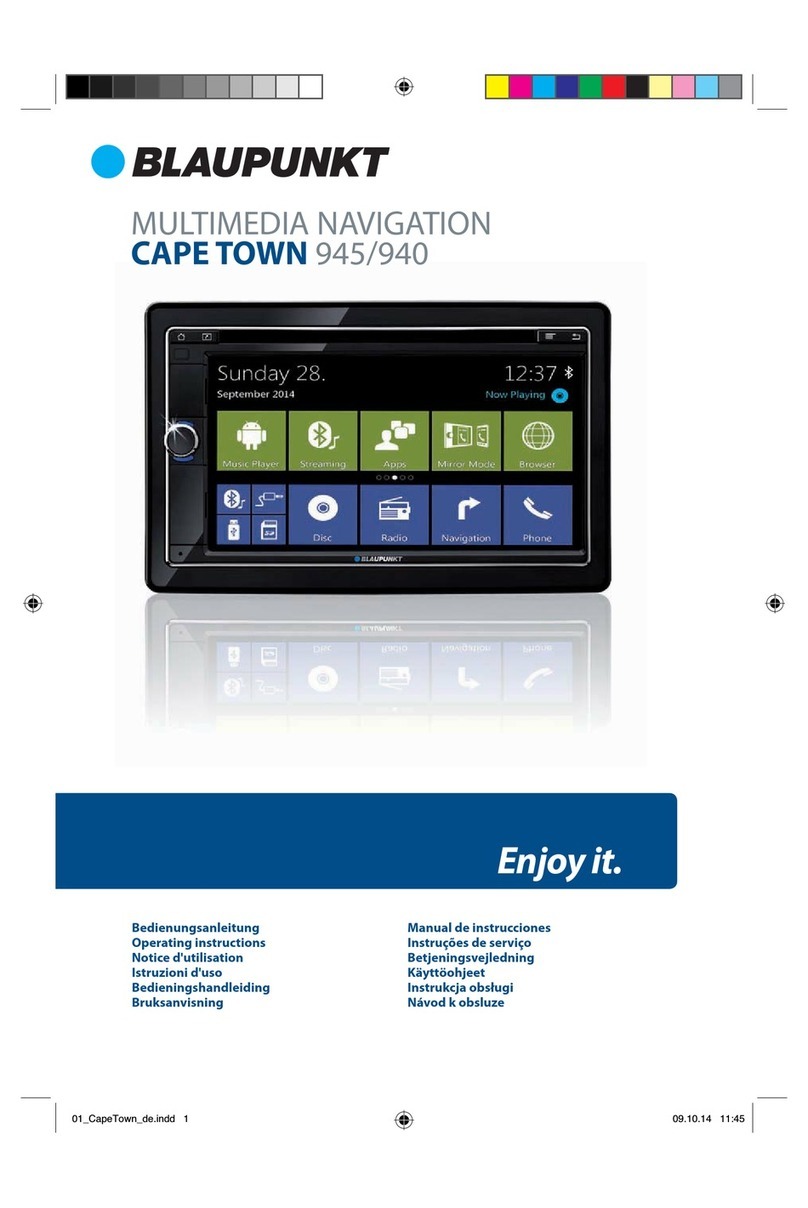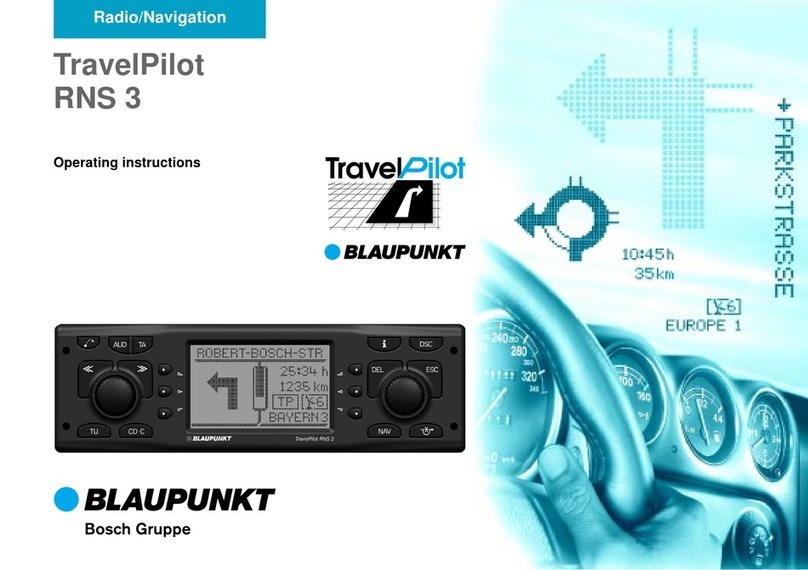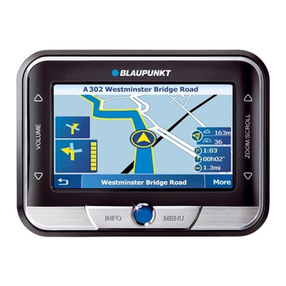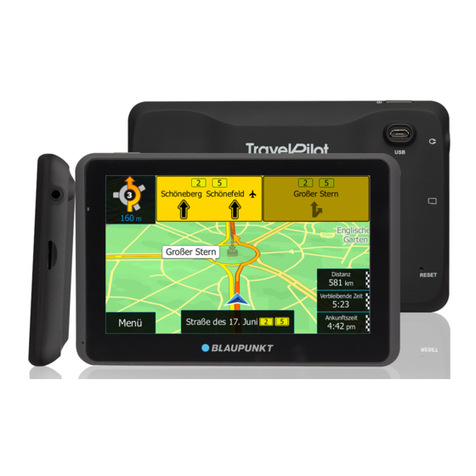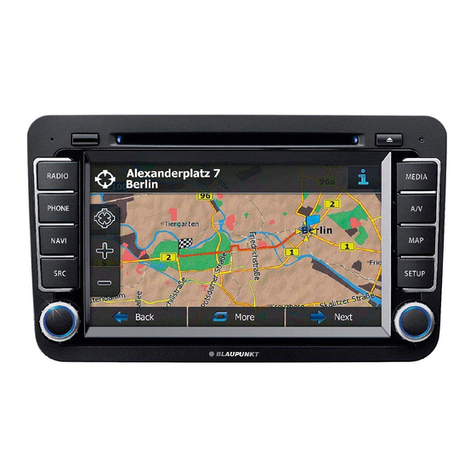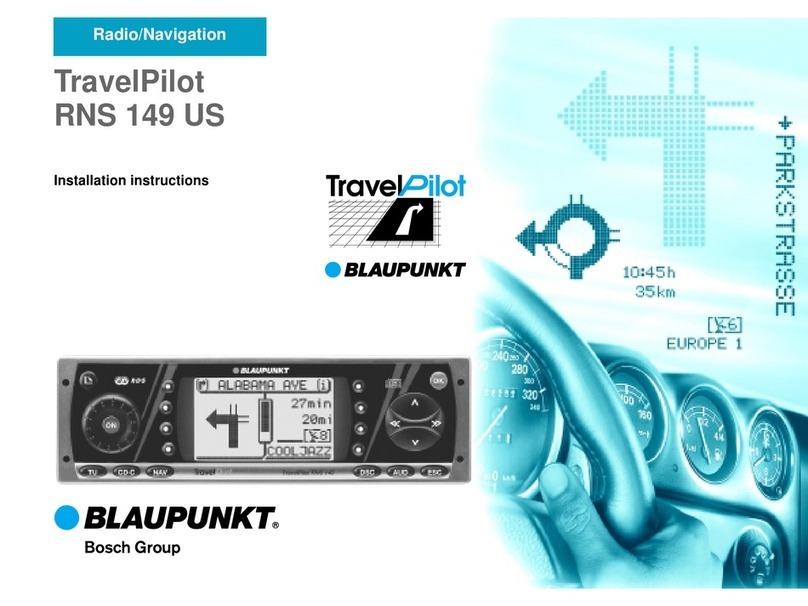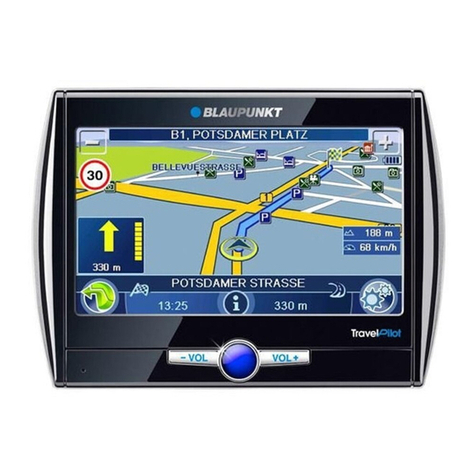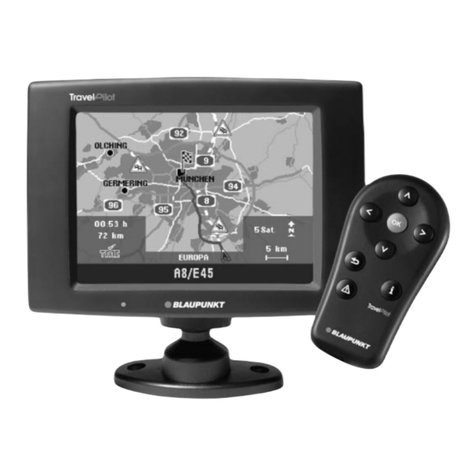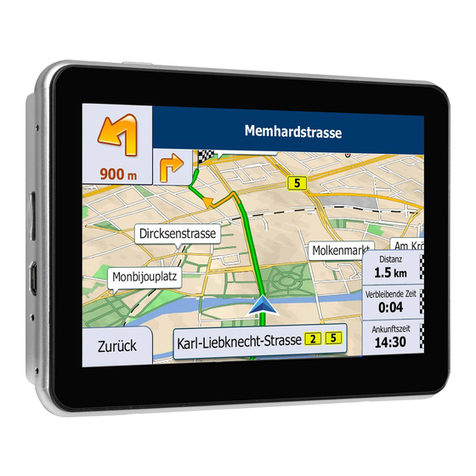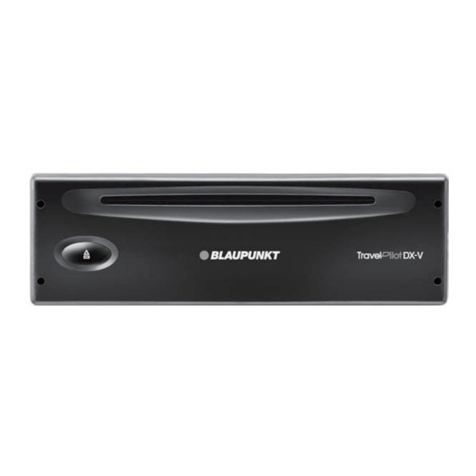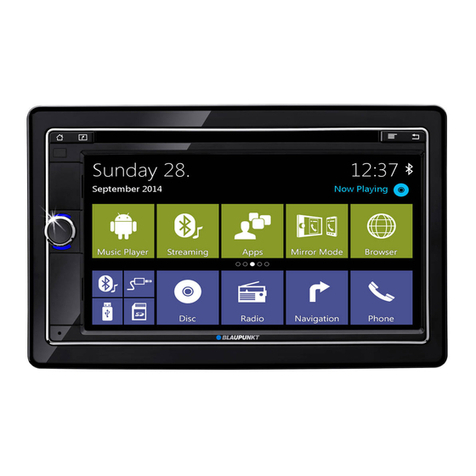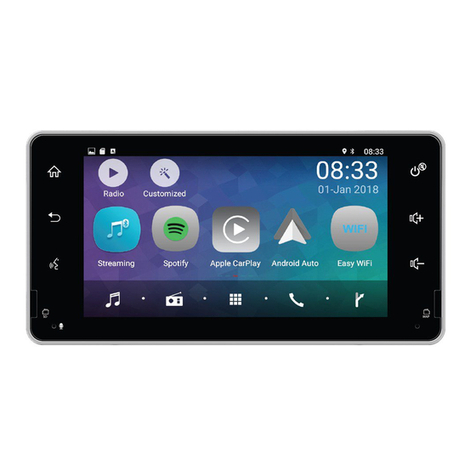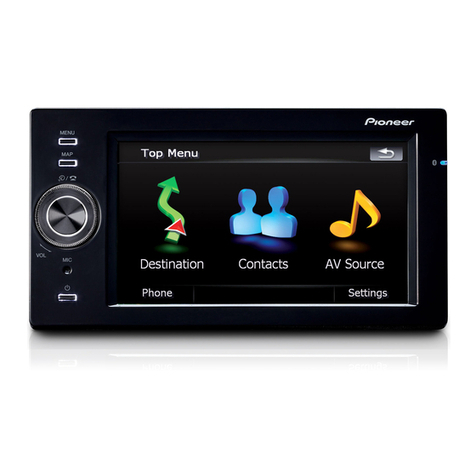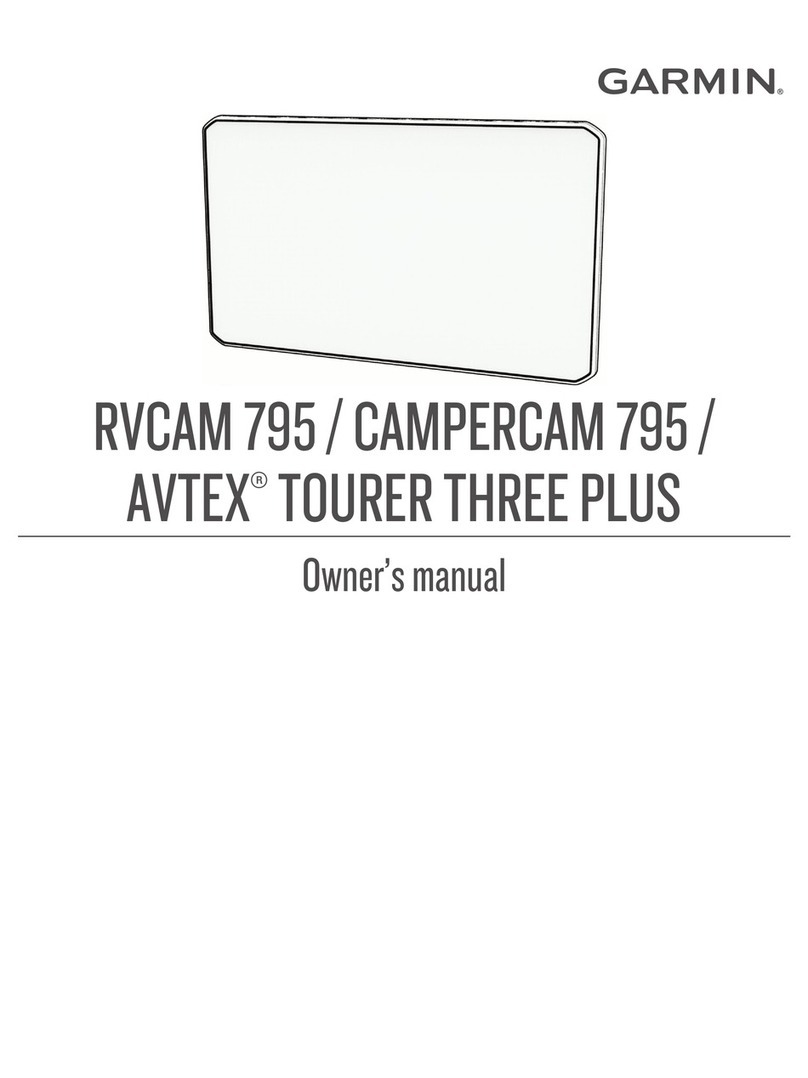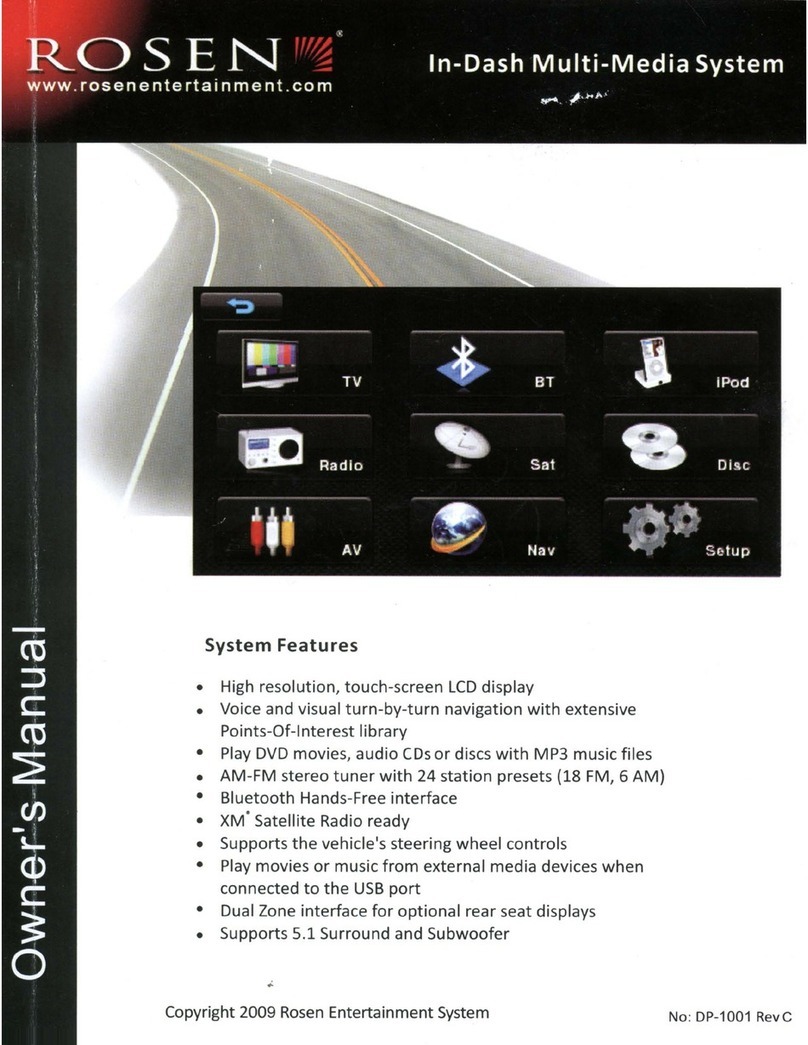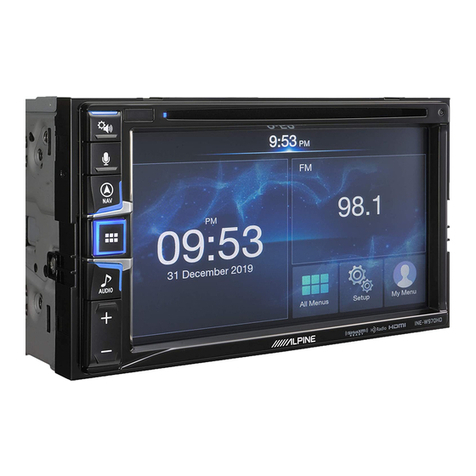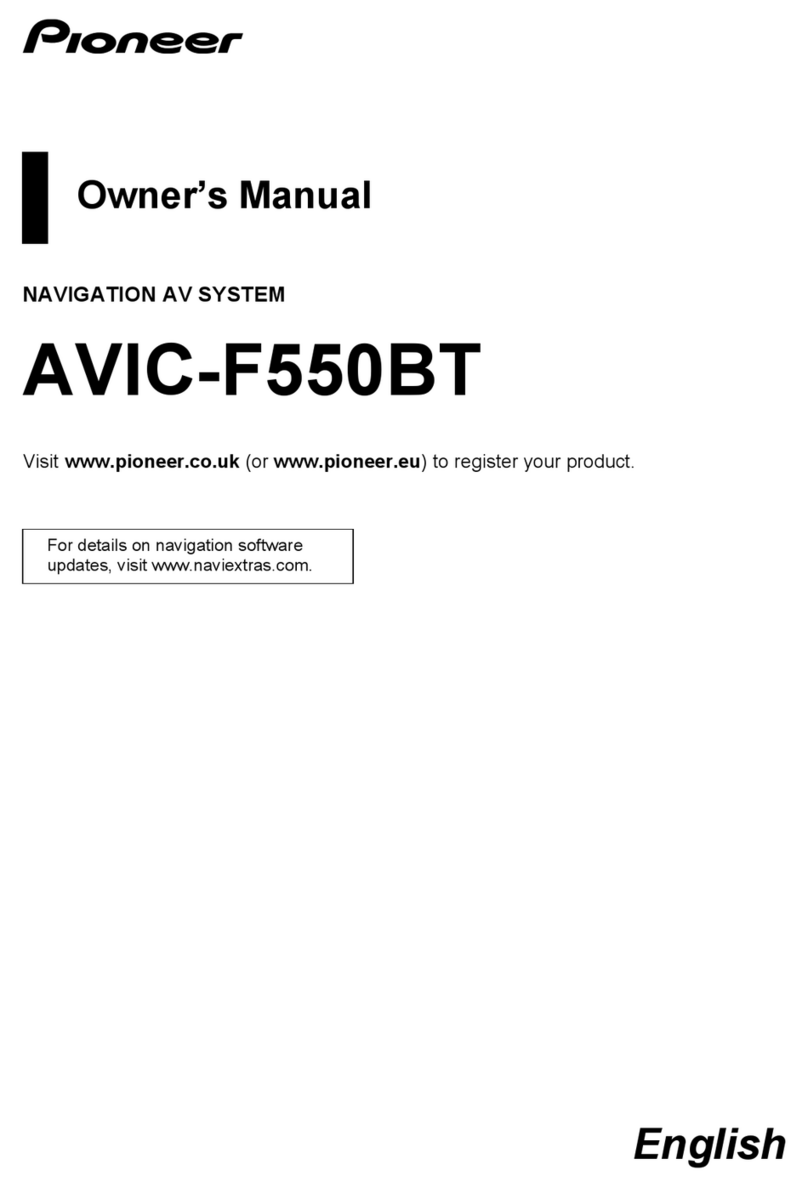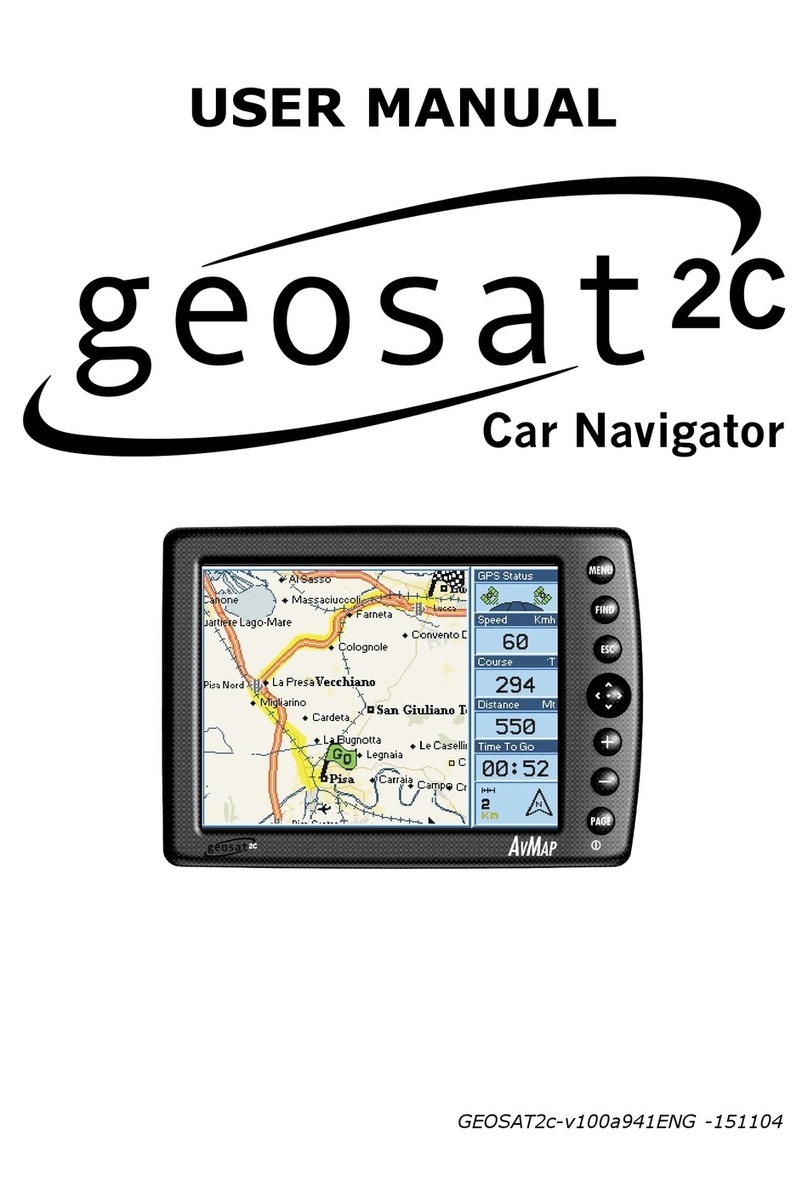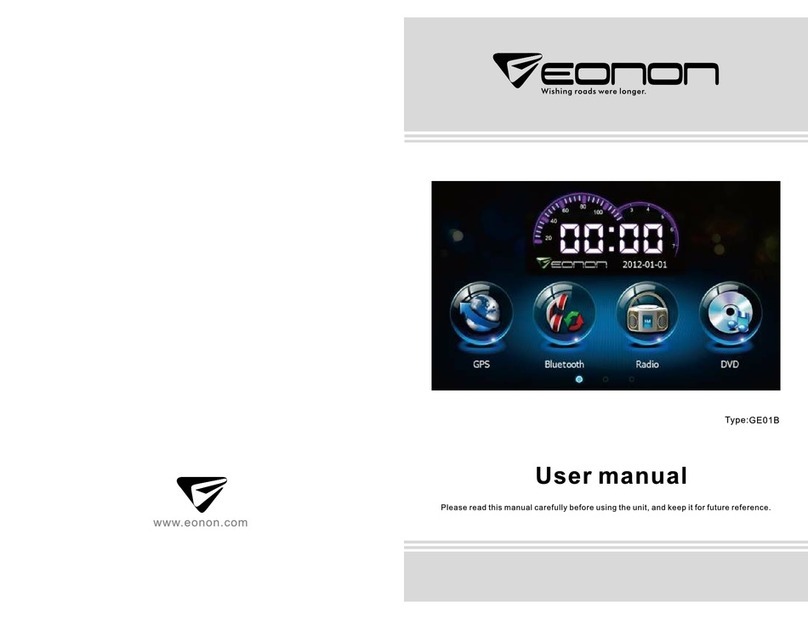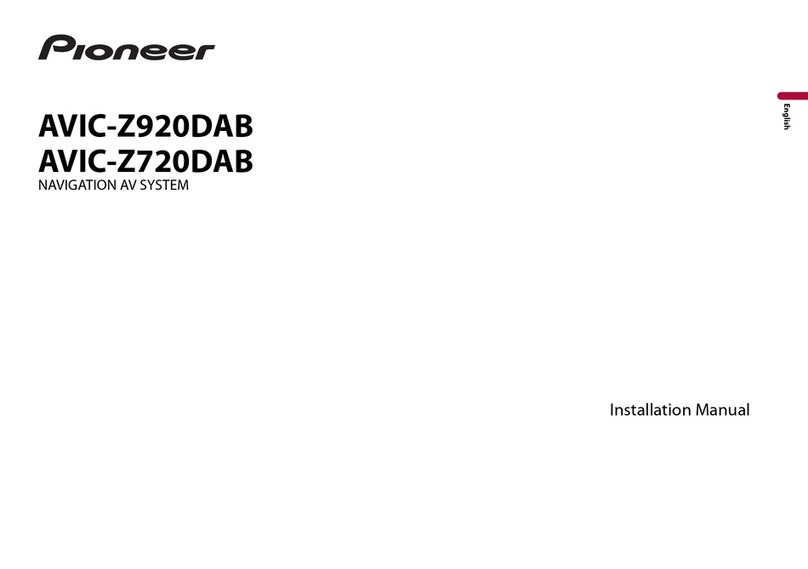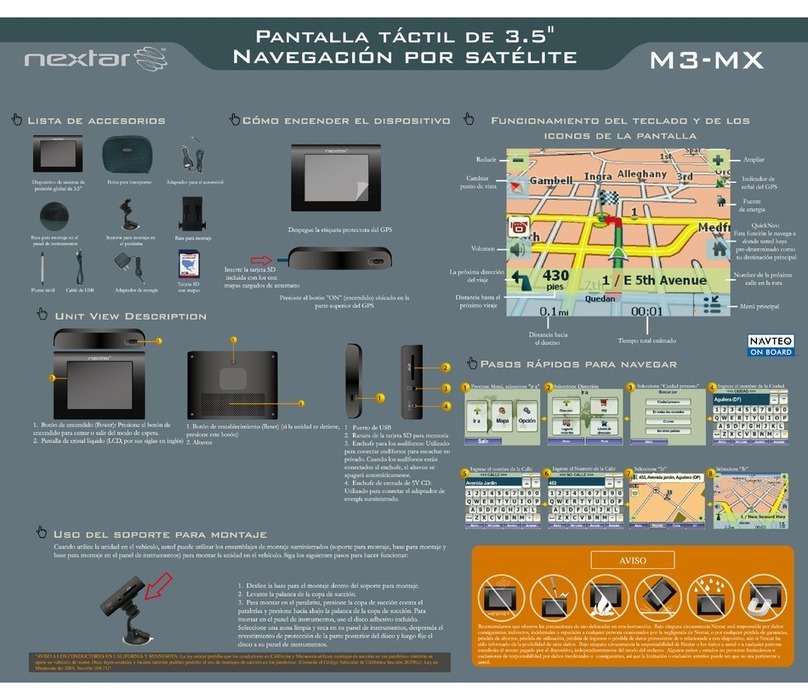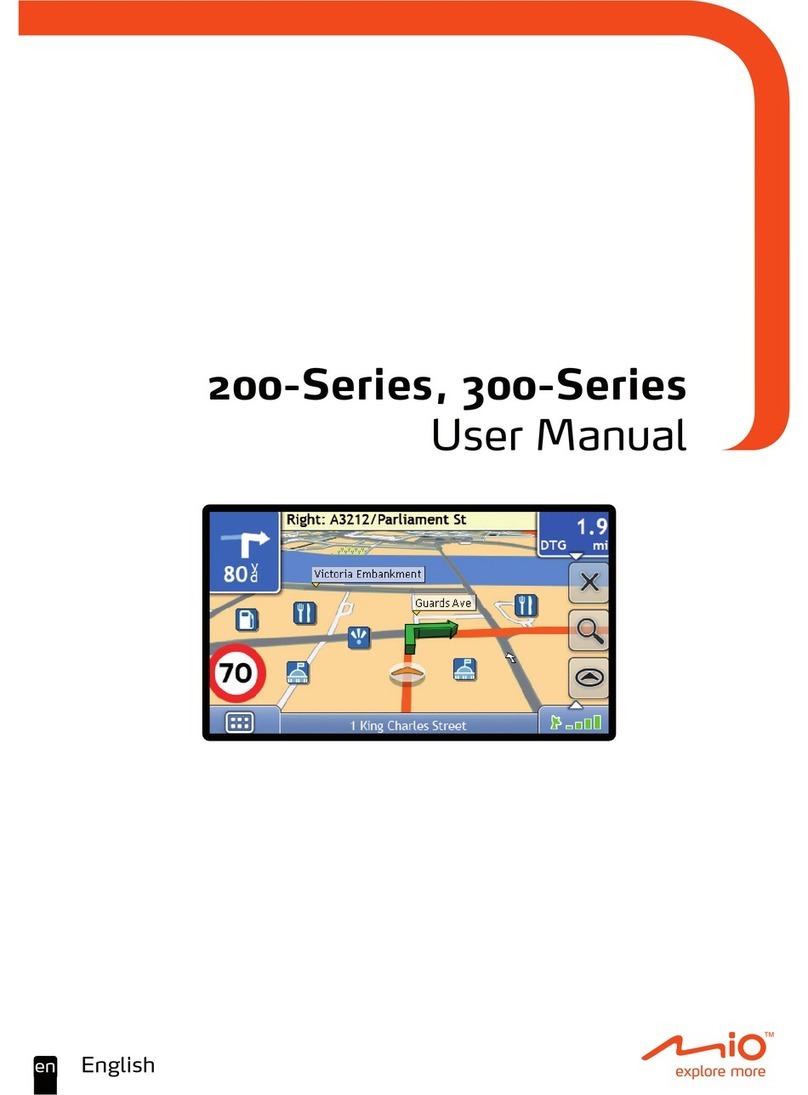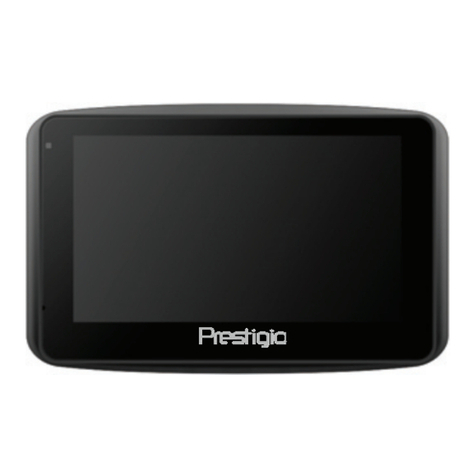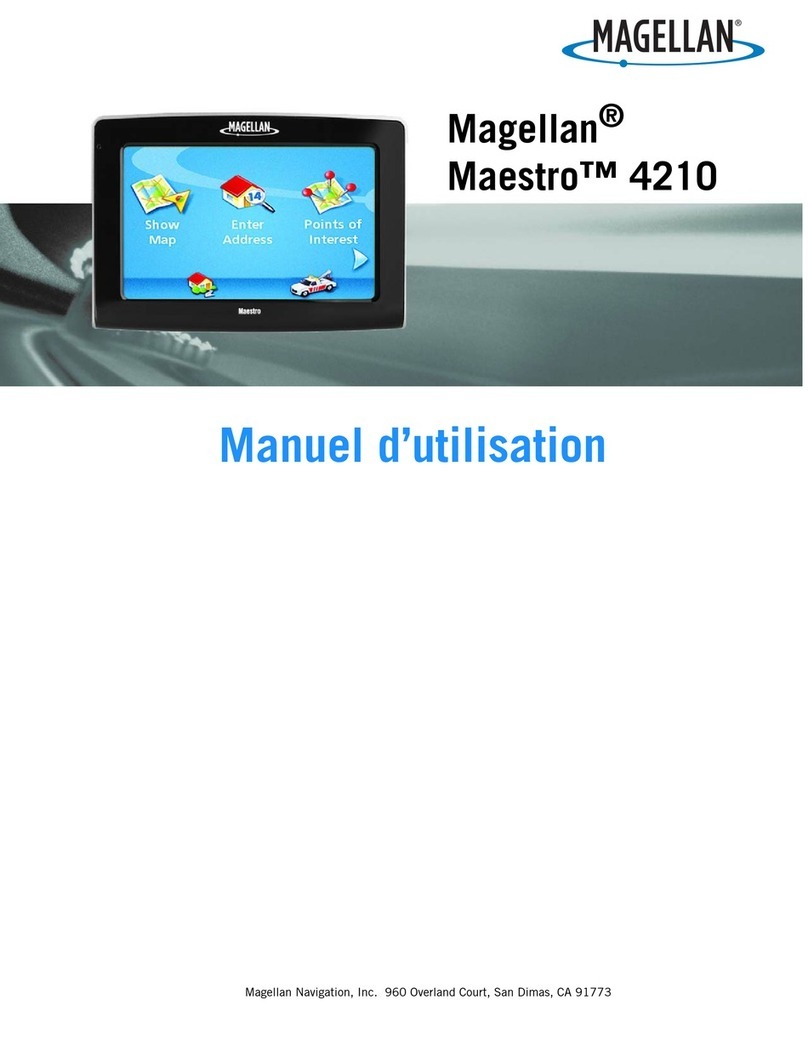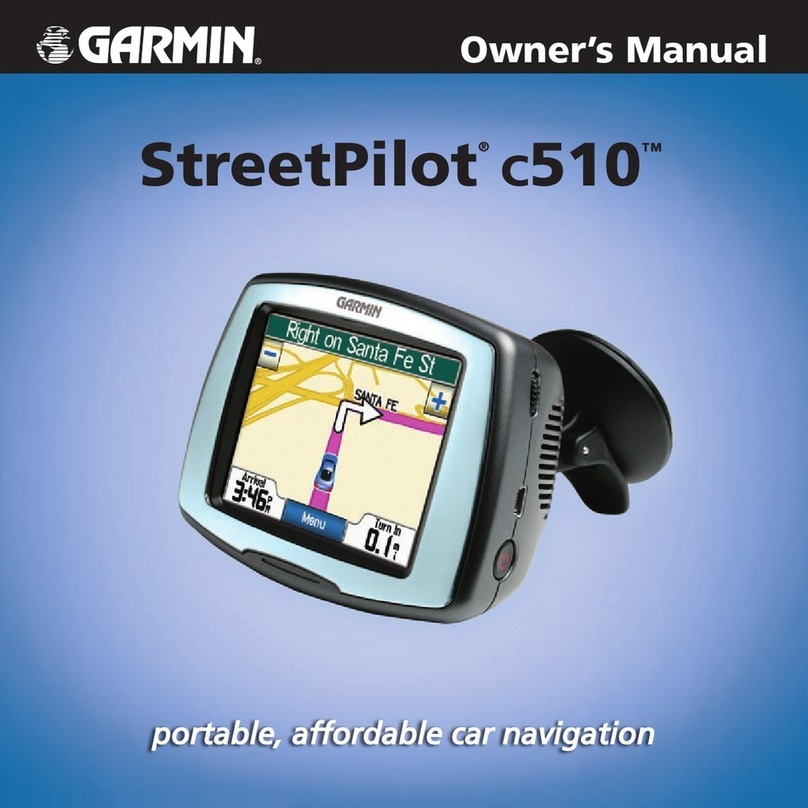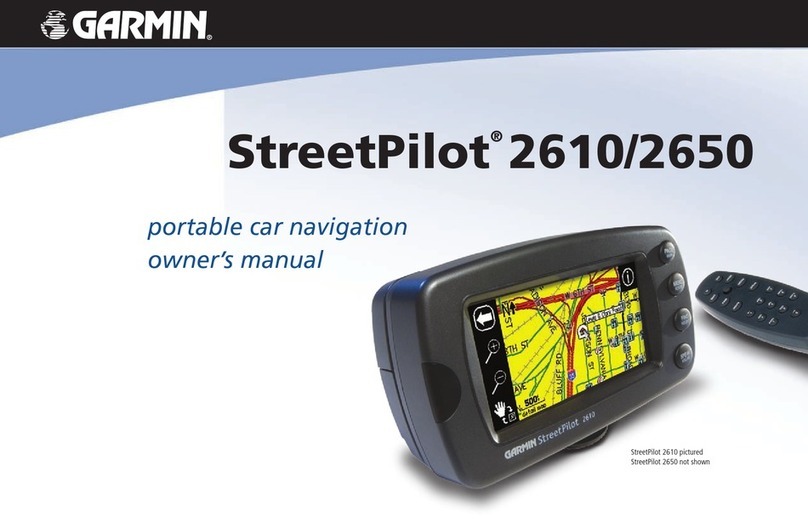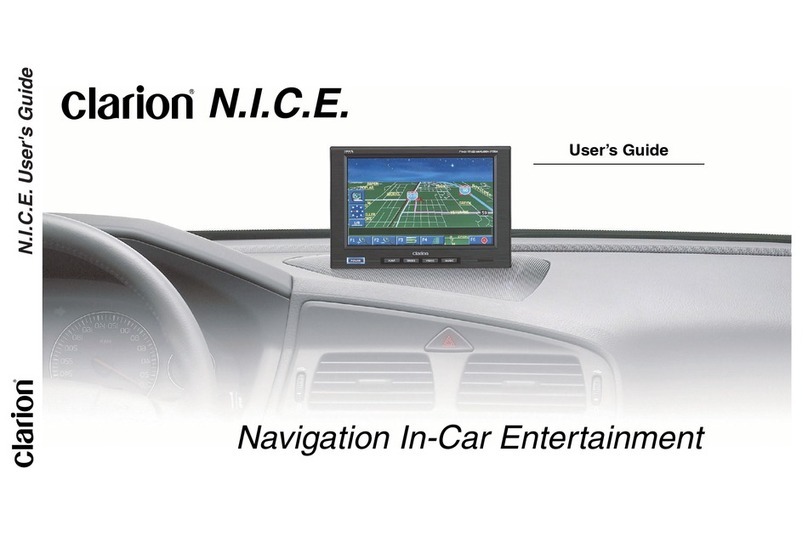- 21 -
DEUTSCH
ENGLISH
FRANÇAIS
ITALIANO
NEDERLANDS
DANSK
SVENSKA
ESPAÑOL
GB
Safety instructions
Installation and connection regulations
While installing and mounting this equipment, you must
disconnect the negative terminal of the battery. Important: You
must also comply with all safety instructions given by the auto
manufacturer (alarm system, vehicle immobilizer, airbag)!
Before drilling holes for mounting the equipment or laying the
wiring, make sure that no existing wiring or auto parts (such as
the petrol tank, fuel line) will be damaged.
Use wire bushings on sharp-edged holes.
Inordertoavoidanyinterference,layallwiringfarenoughaway
from the wire harnesses.
Equipment fuses:
Basic unit: 5 A wire fuse
5 A miniature fuse
Perfect functioning
In order for the navigation unit to function perfectly, it is necessary to
calibrate the system after the installation. For this purpose, a special
installation and calibration CD-ROM including operating instructions is
required.
Note: At the end of the installation instructions you will find a list of error
messages, a service list and a troubleshooting guide.
Componentry Fig. 1
The navigation componentry consists of a navigation computer with an
integrated CD-ROM drive (navigation unit), a NAVI interface, a GPS
receiver with an antenna, a precision resistor for the rear window
defogger, a magnetic field sensor, wheel sensors, a loudspeaker and
mounting material.
Mounting location for the navigation unit
Remove the transport block (two brass screws in the upper plate)
beforebeginningtheinstallationwork.Keepthesescrewsinasafe
place in case the unit must be set in for servicing. After removing
the screws, insert the enclosed plugs into the holes in the upper
plate.
The navigation unit need not be installed at any particular position.
When choosing the mounting location for the navigation unit, you must
makesurethattheunitisinstalledlyinginahorizontalposition(youmust
be able to read the writing on the flap).
Makesure thatthere isenough roomto insertthe navigationCD intothe
CD drive. Use the enclosed installation material in order to mount the
navigation unit.Positive connection Fig. 2
Positive connection Fig. 2
The navigation unit must be connected to permanent plus 12 V and
positive via the ignition.
Laythepermanentplus12Vwire(red)tothebattery(donotlaythewiring
directly by the wire harnesses). Attach the fuse carrier to protect the
positive wire and connect it to the positive terminal on the battery (if
necessary, drill a hole through the splashboard and use wire bushings
accordingly).
Connect the switching plus wire (black) with the fuse carrier at terminal
15 (switched to plus via the ignition) behind the fuse. In cars in which it
isnotpossible toconnect thewire inthefuse box,use theenclosed fuse
carrierto connect thewire directly to terminal15 at the ignition. Remove
the steering wheel panelling first.
Negative connection Fig. 2
Screw the negative wire (brown) directly onto the chassis. Scratch the
contact point for the ground down to the bare metal and grease it with
antiseize graphite petroleum (important for good grounding).
Magnetic field sensor (electronic compass)
Note: You must determine the optimum mounting location for the
magneticfieldsensorineachvehicleindividually.Beforepermanently
installingthemagneticfieldsensor,attachittemporarilyandthentest
the chosen location with the installation and calibration CD-ROM to
make sure everything operates correctly.
The magnetic field sensor must be installed in the passenger room. It
determines the driving direction by measuring the horizontal earth
magnetic field component. Since the earth magnet field is relatively
small, you must ensure that there is no magnetic or electromagnetic
interference affecting the magnet field sensor at the chosen mounting
location.
Use the enclosed mounts to attach the magnet field sensor to a window
which cannot be opened or, especially where estate wagons or liftback
carsareconcerned,mountitwithoutfastenersunderneaththeinsideroof
lining using double-sided sticky tape.
Note: If the magnetic field sensor is mounted in the direct vicinity
of an AM radio antenna integrated into the rear window, it may
cause occasional interference in the radio reception in the long
wave range.
Testing the mounting location of the magnetic field
sensor
Two different tests are required.
1. Test for permanent magnetic interference
Load the installation disk.
Select„findcompasslocation“, andthen„compassellipse“ anddrivethe
vehicle in a circle. A circle should appear on the display inside the
squares(ideallythecircleshouldbeinthecentre).Ifthiscircleispartially
orentirelyoutsideofthesquares,thenyoumustmountthemagneticfield
sensor in a different place.
2. Testing for interference caused by other electrical equipment
Load the installation disk, select „find compass location“ and then
„compass error“.
Press„reset“,switchontheconsumers(e.g.slidingsunroof,rearwindow
wiper).
The value indicated for „Loc. error“ must be less than 3.5.
Press reset each time you switch on a different piece of electrical
equipment.
Afterhavingtested each pieceofelectrical consumerindividually,check
logical combinations as well. The sum of the values for the consumers
must not exceed a „Loc. error“ of 3.5.
If the value registered exceeds 3.5, then you must mount the magnetic
field sensor in a different location.
Note: Do not switch on the rear window defogger while testing for
interferencefromtheelectricalequipment.Anyinterferencecaused
by the rear window defogger is registered separately during
calibration and then compensated.
Precision resistor for the rear window defogger
(shunt)
The precision resistor has 2 connection wires and 1 measuring wire:
1. Connection to the ground contact of the rear window defogger
(length: 250 cm),
2. Connection to the vehicle chassis (length: 75 cm),
3. Measuring wire to the navigation unit (length: 50 cm), Fig. 3
The mounting location of the precision resistor depends on the length of
the wiring.
Do not lengthen the connection wires for the ground contact and the
vehicle chassis. Do not attach the connection for the vehicle chassis to
theliftbackinestatewagonsorliftbackcars.Selectthemountinglocation
for the precision resistor so that any heat build-up will be eliminated
(chassis metal).
Lay the measuring wire to the navigation unit and connect it to the
corresponding jack of the compact plug, Fig. 3
Note: No other electrical equipment (e.g. rear window wiper) may be
connectedtothegroundcontactfortherearwindowdefogger,exceptfor
the rear window defogger.

